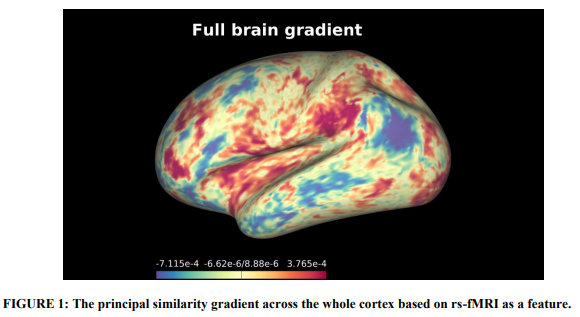
A tutorial and tool for exploring feature similarity gradients with MRI data
Bajada CJ, Costa Campos LQ, Caspers S, Muscat R, Lambon-Ralph MA, Parker G, Cloutman LL, Trujillo-Barreto NJ (2020) “A tutorial and tool for exploring feature similarity gradients with MRI data”. Submitted to Neuroimage, Available in PsyArXiv: DOI: https://doi.org/10.31234/osf.io/7vzbk
There has been an increasing interest in examining organisational principles of the cerebral cortex (and subcortical regions) using different MRI features such as structural or functional connectivity. Despite the widespread interest, however, an introductory and intuitive review on the underlying technique for the neuroimaging community is lacking in the literature. Articles that investigate “neural gradients” have increased in popularity. Thus, we believe that it is opportune to discuss what is generally meant by “gradient analysis”. We introduce basics concepts in graph theory, such as graphs themselves, the degree matrix, and the adjacency matrix. We discuss how one can think about gradients of feature similarity using graph theory and we extend this to explore such gradients across the whole MRI scale; from the voxel level to the whole brain level. We proceed to introduce a measure for quantifying the level of similarity in regions of interest. We propose the term “the Vogt-Bailey index” for such quantification to pay homage to our history as a brain mapping community. We run through the techniques on a sample brain MRI dataset as an example of the application of the techniques on real data and we provide several appendices that expand upon details. To maximise intuition, the appendices contain a didactic example describing how one could use these techniques to solve a particularly pernicious problem that one may encounter at a wedding. Accompanying the article is a tool, available in both MATLAB and Python, that enables readers to perform the analysis described in this article on their own data. We refer readers to the graphical abstract as an overview of the analysis pipeline presented in this work.
Read the full article here.






0 Comments